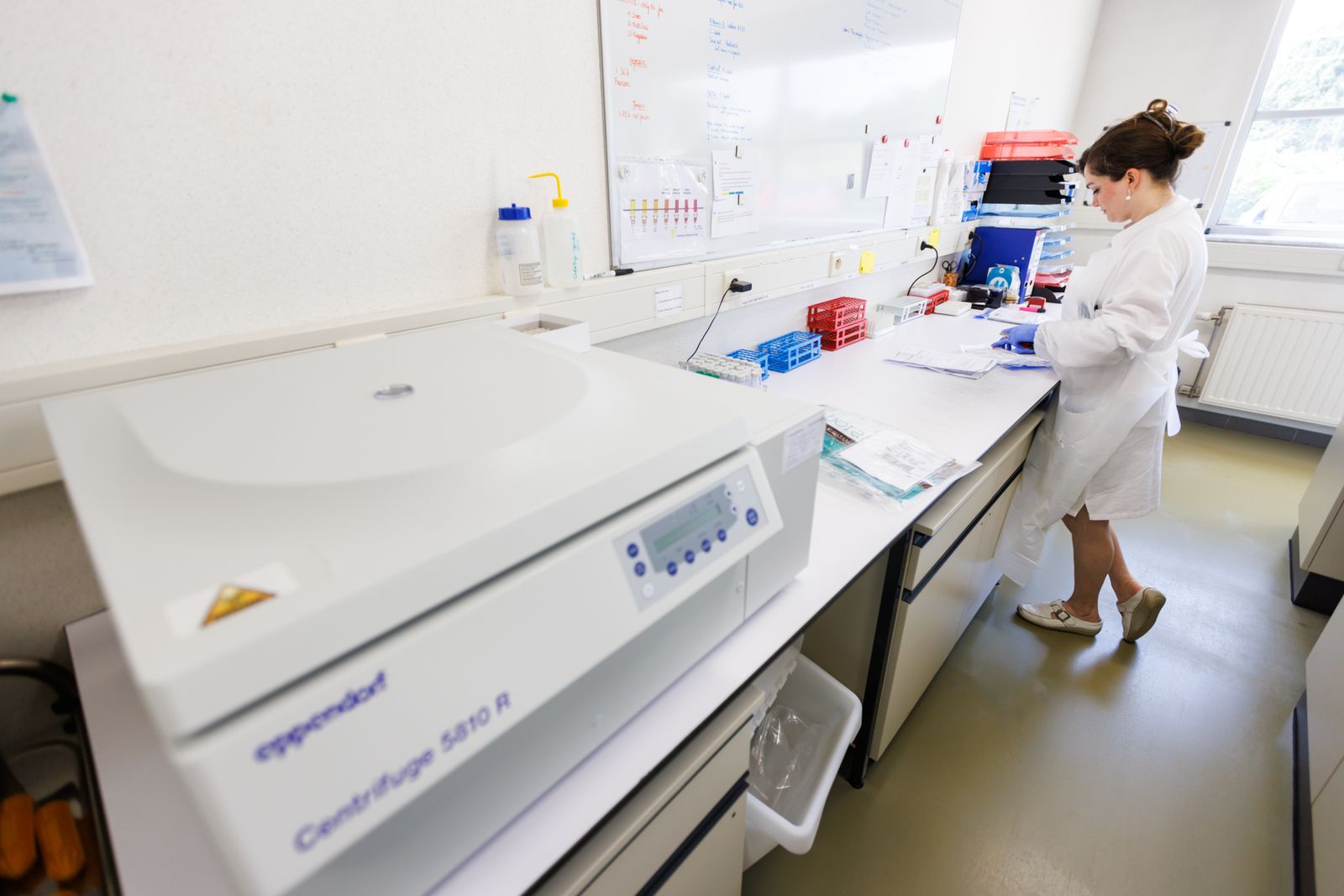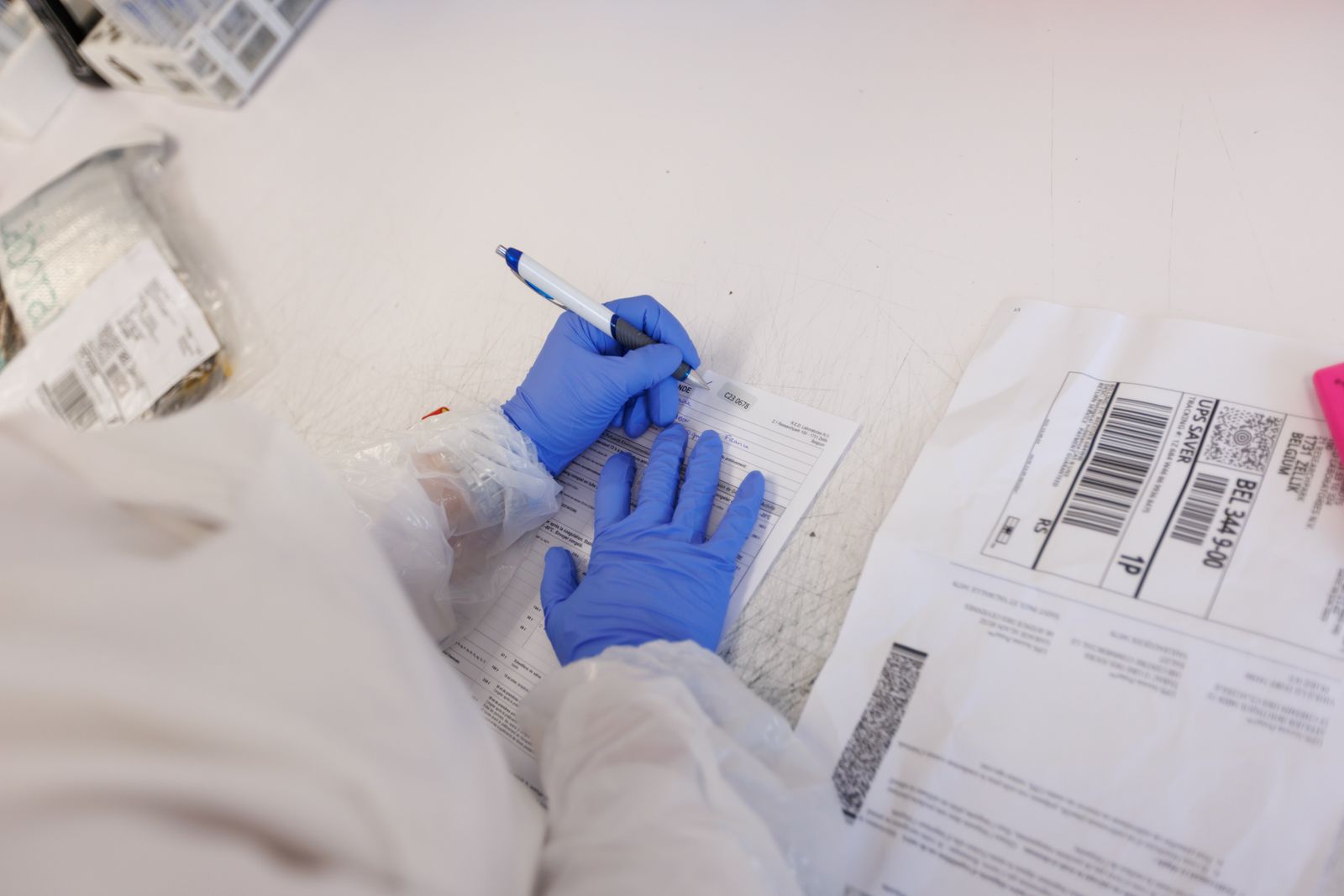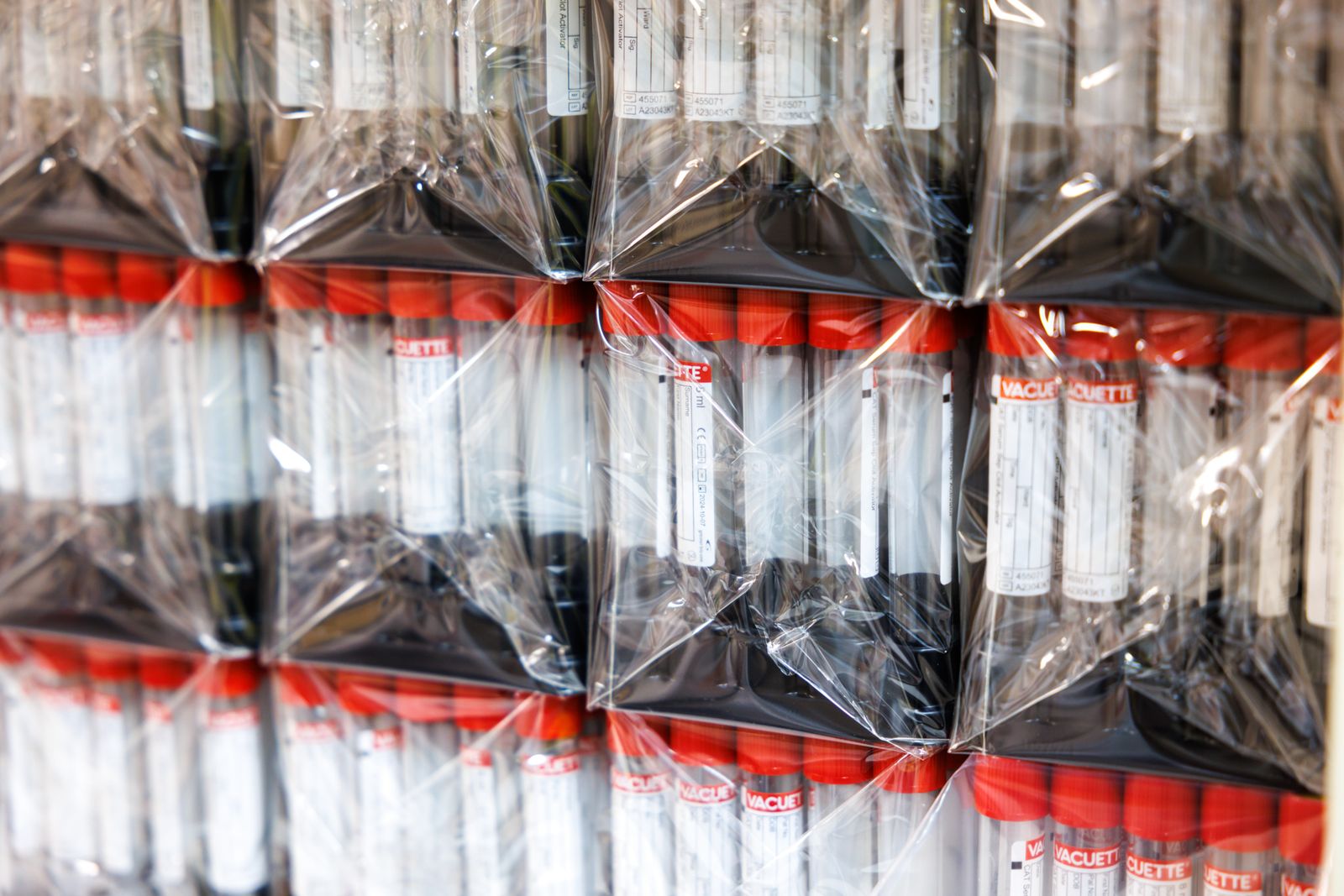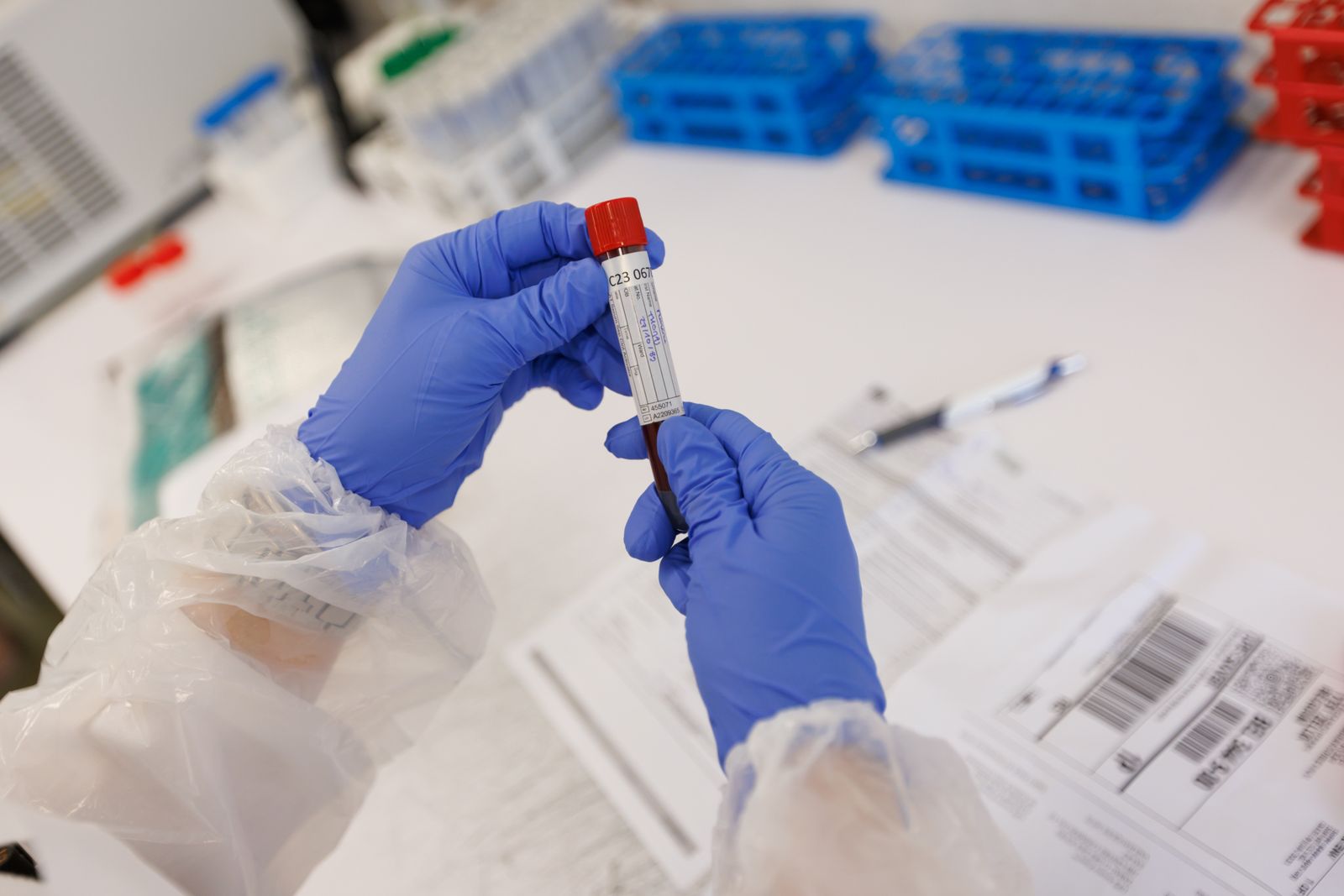
Nagalase (n-acetylgactosaminidase) is an enzyme that deglycosylates the Gc protein also known as vitamin D binding protein (VDBP). The Gc protein is thereby rendered incapable of conversion into active GcMAF. As a result, the regulation of macrophage activation is prevented.
Activity of α-N-acetylgalactosaminidase (Nagalase) in serum or plasma is determined through a proprietary method consisting of a two step immunocapture assay.
Nagalase is known to inactivate Gc-MAF and his natural precursor Gc-globulin. It is proposed that patients could be treated with substitution therapy with Gc-MAF and Nagalase has been projected as marker (indicator) of effectiveness for the Gc-MAF therapy.
We want to inform you that we implemented a new improved method for the measurement of patients Nagalase, reported as NAGAnew. It features an improved nagalase measurement differentiating the free nagalase activity, the bound amount of non-active nagalase and the total amount of nagalase (free plus bound).
The values of the new method for measuring the Nagalase are different from those which were reported previously and the normal limits (P10 – P90) are different from those reported previously (new evaluation based on sera from normal healthy people) which have to be compared to the distribution of values seen in different types of patients (breast cancer, ovarian cancer, colon cancer, pancreas cancer …) Using these 3 parameters and their increase in the blood can be used as a diagnostic and prognostic value for a certain type of cancer in each patient. Their value can be determined. The cost of this set of analyses will be charged the equivalent of the old set of parameters. A separated pricing is set up for the determination of the Nagalase-GcMAF complex levels.
In the old NAGALASE test the apparent Nagalase level stand for the nagalase enzymatic activity determined on diluted serum with an umbelliferyl derived specific substrate, but the analytic method is a kinetic measurement, In the new method called free Nagalase we also use the same umbelliferyl derived substrate for Nagalase but the method of determination is an end-point measurement which make the test more robust and less prone to interferences. In the old method the calibration was based on a serum pool of more than 300 donors whereas in the new method the calibration is based on the signal of an exact weight based amount of the end product of the converted substrate i.e. umbeliferone. This approach of calibration and the endpoint method of measurement make the determination more stable and robust.
In the new method the range has again be determined on a population of more than 300 normal healthy controls, and as expected this range is situated lower than in the older method. This in agreement with the median values obtained on normal healthy donors for both methods i.e. 0.73 for the old method and 0.43 for the new method.
For the item effective nagalase (old) and total nagalase (new) these two item are intended to give an idea about the total quantity of Nagalase in circulation ie. the free nagalase (measured directly through its enzymatic activity) plus the circulating bound nagalase (enzymatically inactive or blocked).



For these parameters we will observe greater differences between the old and the new method. In the old method the effective nagalase was derived from a calculation based on the levels of free Nagalase and the Gc-globulin, in the new method the total Nagalase (free + bound) is precipitated from the serum, converted in enzymatical active enzyme and measured as total Nagalase content of serum. Normal ranges and median values in both methods were determined on a normal healthy control population of 300 normal healthy controls.
For comparison reasons you can apply the principle of the ratios of the old result vs the median value of the normal population, i.e. old value over 1.03 (median old method), versus the ratio of the value new method over 1.44 (median new method), and then the ratio of the 2 obtained values.
In addition to the above mentioned set of parameters, a totally new parameter has been developed to get an idea on the response of the innate immune response. The innate immune response of the patient is modulated by a macrophage, monocyte, and dendritic cell activity. This activity is stimulated through a macrophage activating factor i.e. Gc-MAF which occurs in a very low concentration in the blood.
Moreover this Gc-MAF is immediately removed after his binding to Nagalase and the binding to the macrophages, monocytes and dendritic cells that become activated. Until now nobody has been able to measure free Gc-MAF in serum or plasma.
However apart from the cellular capture of Gc-MAF this activating factor is also removed from the blood as a stable complex with the Nagalase enzyme and the amount of this Nagalase-GcMAF complex is an additional parameter to monitor the innate immune defense. If there is an invasion through cancer cells apparently there is a defective innate immune system due to a low production of Gc-MAF from its precursor Gc-globulin. A decrease in circulating Gc-MAF complex is a marker for a defective innate immune system and can be used for cancer diagnosis and for monitoring cancer therapy with Gc-MAF-like supplementation. This set additional set of parameters will be invoiced separately when this test is requested by the physician.
The method for determination of Gc-globulin has been changed from turbidimetry towards an ELISA method. However the calibration of both tests has remained the same and the standard in both methods is based on a serum pool including more than 300 sera of normal healthy control persons. The normal ranges for the old test version and the new test version have been based on the percentile values P10 (lower limit) and P90 (upper limit) of sera from over 300 normal healthy controls.
The median value of this normal population shifted slightly from 420,71 mg/L (old method) to 451,03 for the new method (ELISA). Gc-globulin is mainly synthesized in the liver and physiological variation may be expected in function of time and in function of the liver function. Only if Gc-globulin tends to decrease continuously it may be an indication of declining liver function ultimately leading to liver failure. However it’s only at levels below 100mg/L there is an acute danger of liver failure. At levels above 300mg/L there is certainly no reason to admit that the level of this precursor should influence the normal synthesis of Gc-MAF and affect the innate immune system.
DPP4 value is still provided, and the method remains the same. DPP4 is a T-cell activation marker present on many immune cell but they increase upon immune activation. Part of the membrane bound DPP4 can be shed in the plasma/serum where it is measured. An increased value of Dpp4 should be associated with immune activation of different origin (infection, inflammation, autoimmunity etc). Low levels of DPP4 have been associated with chronic fatigue syndrome and certain tumors may shed very high quantities of DPP4 in the serum.

Thus, the new request forms indicate 2 Nagalase panels:
NAGAnew1 (“same” price, 108€ for Europe, 125$ for USA), displaying 4 parameters:
total Nagalase
free Nagalase
bound Nagalase and
DPP4.
NAGAnew2 (205€ for Europe, 240$ for USA), displaying 6 parameters:
total Nagalase
free Nagalase
bound Nagalase and
Nagalase-GcMAF complex
Gc-protein and
DPP4.

Sample collection
Testing on Serum: Whole blood must be collected in serum tubes (like BD Vacutainer SST II Advanced tube, yellow cap). Tubes must be centrifuged by nurse/physician at 3000 rpm for 10 minutes after one hour of clotting at room temperature. Serum has to be aliquoted in new, sterile tubes and frozen. Immediately freeze at least 3ml of serum and ship to the lab on dry ice. Sample must be kept frozen at all time. Centrifuged serum tube could be shipped on ambient temperature if its delivery is ensured within 24h hours after the blood sampling.



